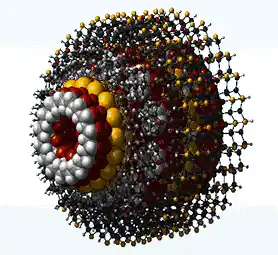افشین رشید
اُستادیار ؛ عضو هیات علمی دانشگاه آزاد اسلامی واحد علوم و تحقیقات تهران
597 یادداشت منتشر شدهNano and Micro Electro-Mechanical Systems (MEMS ) Division Silicon Dioxide Etch

Note: For the preparation and fabrication of nano- and micro-electro -mechanical systems (MEMS ) , silicon dioxide is etched . The remaining photoresist is used as a hard mask that protects the silicon dioxide part. The photoresist is removed by wet etching ( hydrofluoric acid, sulfuric acid, and hydrogen peroxide) or dry etching (using oxygen plasma). The result is a thin film of silicon dioxide on the silicon substrate.
Since nano- and micro- electromechanical systems (MEMS ) are manufactured using wafer-based processes that are used in semiconductor manufacturing, this allows for flexible sharing of manufacturing capacity and supports high-volume manufacturing capabilities. Some materials can form ordered, nanoscale structures under controlled conditions—self-assembly. The problem with this approach is the lack of flexibility in the achievable structures and materials that can be used, which limits the functionalities that can be realized.

In this technique for fabricating nano and micro electromechanical MEMSsystems, a thin plate with designed apertures, called a stencil mask, is placed adjacent to the substrate and used in combination with material evaporation . The evaporated material stops at the top of the stencil mask, except at the apertures. Thus, the material grows in specific patterns determined by the stencil mask. For fabricating nano and micro electromechanical MEMSsystems,using appropriate stencil masks, nanopatterned materials can be grown on the wafer scale in a single shot. Resolutions down to 20 nm have been achieved and can be used on unconventional substrates such as rope , but this technique suffers from some problems in the fabrication of nano- and micro- electromechanicalsystems (MEMS) due to shadow deposition under the stencil mask and lifetime issues due to stencil mask degradation caused by material deposition at the edges of the holes, eventually blocking them (the occlusion effect). Advances such as the use of dynamic stencil masks have increased the range of applications of this technique.

Silicon wafer substrates can be used for sample substrates, fabrication of nano- and micro-electro -mechanical MEMS systems . A useful flat substrate for bonding silicon wafer particles to nanowires and for biological applications, Si (silicon wafer) and fabrication of nano- and micro-electro -mechanical MEMS systems have properties similar to glass and can be used to mount or grow nanowire particles. It can be easily cleaned or used as a whole wafer for replication and fabrication of nano- and micro-electro -mechanical MEMS systems . For fabrication of nano- and micro-electro -mechanical MEMS systems , silicon nanowire arrays or SiNWs are vertical arrays of silicon nanowires on a flat crystalline silicon wafer substrate. These nanowires are fabricated by a catalytic oxidation and dissolution of Si in the presence of metal catalyst nanoparticles - a self-organized process commonly known as metal-chemical enhanced process with the aid of silicon wafers .
Conclusion :
To prepare and fabricate nano- and micro- electromechanical systems (MEMS ), silicon dioxide is etched . The remaining photoresist is used as a hard mask that protects the silicon dioxide part. The photoresist is removed by wet etching ( hydrofluoric acid, sulfuric acid, and hydrogen peroxide) or dry etching (using oxygen plasma). The result is a thin film of silicon dioxide on the silicon substrate.